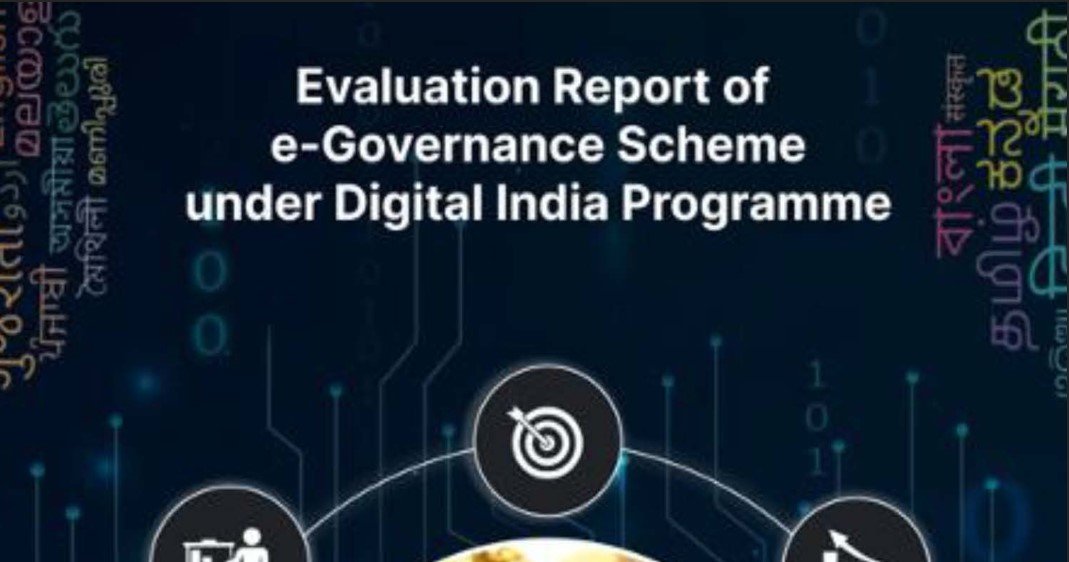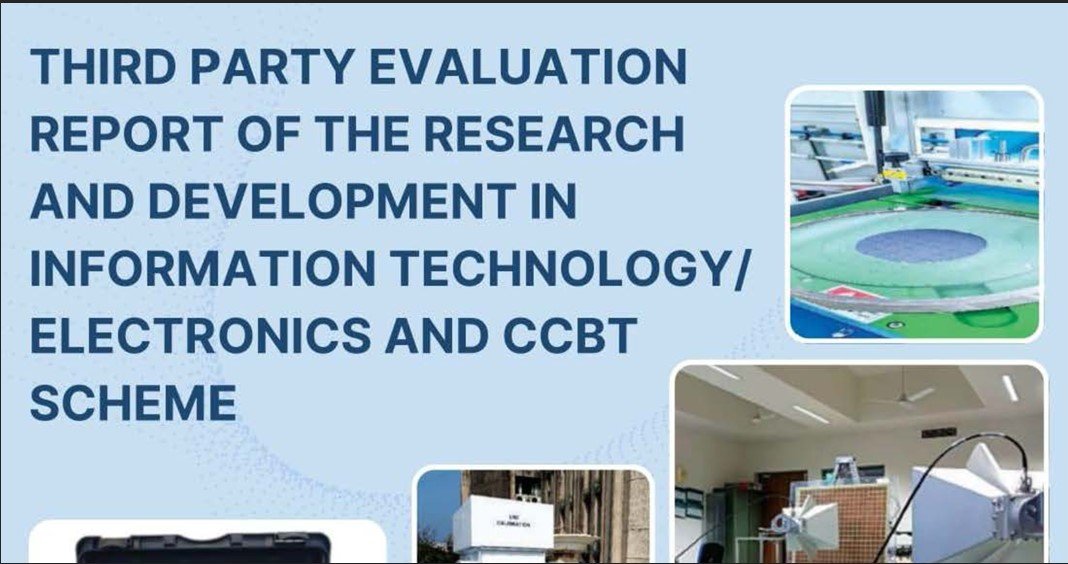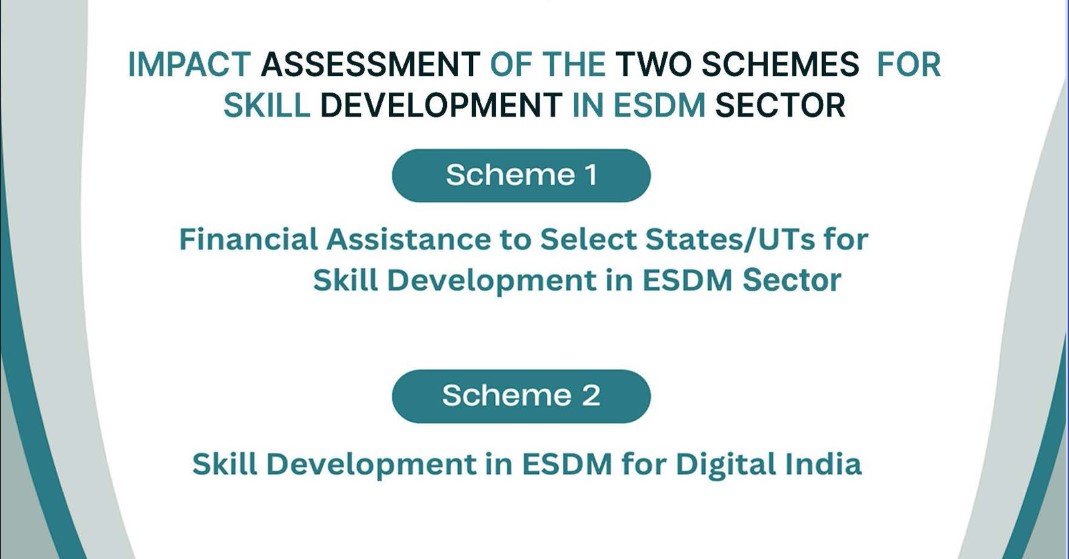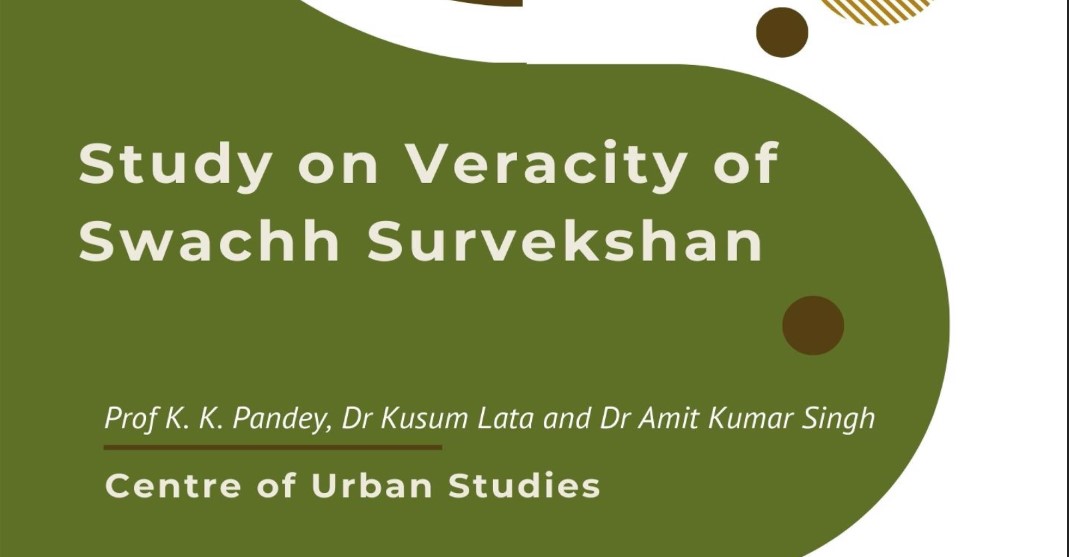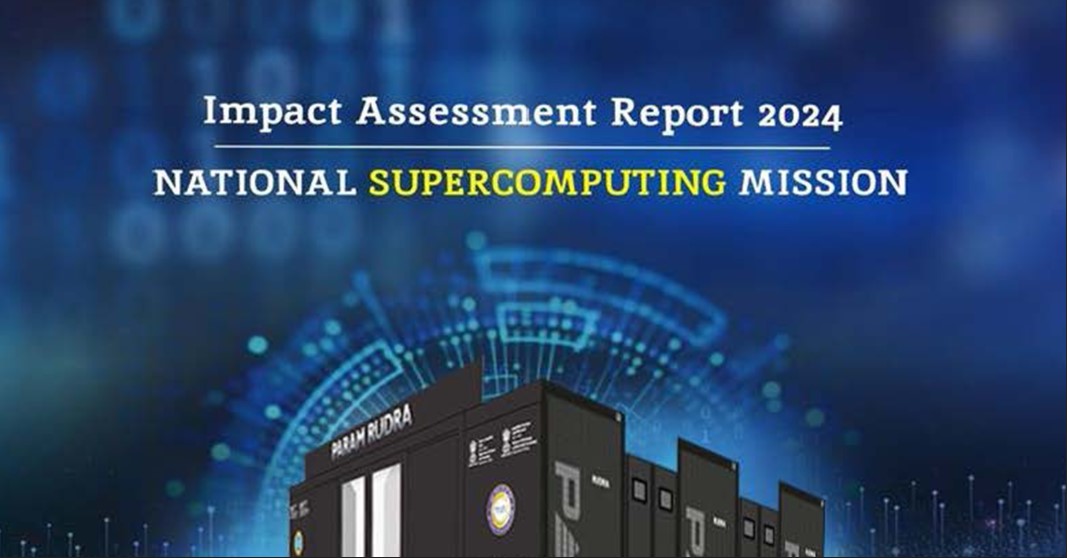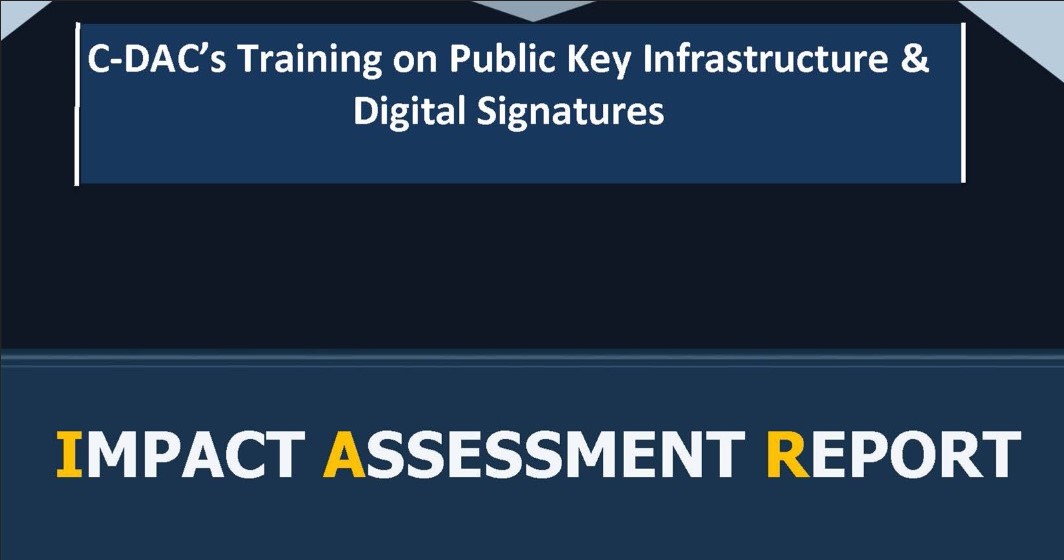About the Scheme
India’s vision to create a digitally empowered society and knowledge economy has been driven by the Digital India programme, spearheaded by the Ministry of Electronics and Information Technology (MeitY), Government of India. In pursuit of this transformative vision, various e-Governance schemes have been implemented to enhance the efficiency, transparency, and inclusiveness of public service delivery through technology-enabled governance. The Evaluation Report of the e-Governance Scheme under the Digital India programme aims to assess the impact, performance, and outcomes of these initiatives in promoting digital transformation across the administrative and citizen landscapes. The main objectives of the scheme are:
1. To make government activities visible to the public through online platforms and databases, ensuring greater responsibility among officials
2. To automate processes to cut paperwork, accelerate service delivery, and reduce administrative and operational expenses
3. To provide citizens with easy, real-time access to government services and information, enabling participation and feedback in decision-making
4. To bridge the digital divide to ensure equal access to government services and information for citizens across all regions
5. To strengthen coordination among government agencies and create a more transparent, efficient environment for businesses engaging with the government.
The outcomes of the projects reach a broad audience and have a significant impact on society. A mixed-methods approach was adopted, combining a comprehensive review of secondary data sources (including official documentation, performance dashboards, utilisation reports, and project approvals) with a purposive sampling of 51 distinct projects. These projects were categorised into 5 thematic categories. Digital Infrastructure; Digital Public Infrastructure; Digital Services and Portals; Ease of Digital Accessibility; and Awareness and Capacity-Building.
Digital Infrastructure
The Digital Infrastructure category under e-Governance forms the backbone of India's Digital India vision by establishing a comprehensive ecosystem of interconnected components. There are a total of 15 projects under this theme.
It includes physical infrastructure such as State Data Centres (SDCs), State Wide Area Networks (SWANs), and Digital India Common Service Centres (DICSCs), complemented by Gov. in Secure Intranet Portal, and Bharat Data Exchange (Bharat X) etc., which together enable seamless digital transformation across the country. This ecosystem ensures secure connectivity, scalable hosting, and seamless service delivery across government departments while extending digital access to not only urban but also rural citizens. Beyond improving efficiency, transparency, and accountability in governance, it plays a transformative role by bridging the digital divide, empowering citizens with anytime-anywhere access to services, and creating a future-ready foundation for inclusive socio-economic growth.
Digital Public Infrastructure
The Digital Public Infrastructure (DPI) initiative provides the core framework for delivering inclusive, secure, and interoperable digital services at scale. By combining digital identity, payments, document exchange, and consent-based data sharing within a trusted ecosystem, DPI empowers citizens to have greater control over their data while ensuring universal access to essential services, including banking, healthcare, education, and governance. There are a total of 4 projects under this theme.
Feasibility Study and Establishment of Technical Standards Organisation (DIGI-FEST) initiative is establishing technical standards to ensure the next generation of digital identity is secure and interoperable. Meanwhile, Unified Mobile Application for New-Age Governance (UMANG 2.0) is enhancing the single mobile gateway for all government services to make digital governance more accessible and efficient. Simultaneously, DigiLocker 2.0 is upgrading the platform for secure digital document exchange, giving citizens even greater control over their official records and API Setu for seamless cross-government data integration.
Digital Services and Portals
The Digital Services ensures seamless, secure, and citizen-centric access to government services anytime, anywhere. There are 24 projects under this theme, Platforms/Services such as Meri Pehchaan-National Single Sign on (NSSO), e-sign (Hastakshar), National Scholarship Portal (NSP), and e-Office and GovDrive- Storage as a service for Government, bring together multiple services, featuring interoperability, multilingual support, and mobile accessibility. Leveraging DigiLocker, Aadhaar, and Application Programming Interfaces (API) Setu reduces costs, eliminates paperwork, enhances transparency, and extends services to remote populations. Together, they foster citizen-centric governance, efficiency, inclusivity, and socio-economic empowerment.
Ease of Digital Accessibility
The Ease of Digital Accessibility initiative ensures government platforms are inclusive and barrier-free for all citizens, including persons with disabilities, senior citizens, and those with limited digital literacy. Operating under two specialized projects, a Virtual Reality-based Assistive System for persons with intellectual disabilities and ChalaChitra Vaachana (an AI-powered audio description platform), the initiative provides multilingual support, screen reader compatibility, text-to-speech functionality, high-contrast modes, and simplified navigation. This initiative directly supports the Digital India vision of creating an accessible digital society where technology serves as an enabler, ensuring India's digital transformation benefits all citizens regardless of their abilities or location.
Awareness and Capacity Building
The Awareness & Capacity Building initiatives strengthen India's e-Governance through digital service awareness and skill enhancement for government officials. This theme comprises 6 projects including NeGD 4.0, Capacity Building Phase-III, Digital India Programme Communication, eGOVMMCASES, e-Taal 3.0, and Vikaspedia 2.0. These initiatives combine mass media campaigns with capacity building programs through SeMTs, iGOT Karmayogi training, and technology workshops, fostering digital inclusion and governance efficiency nationwide.
Alignment with Global and National Priorities
The e-Governance scheme demonstrates strong alignment with global and national development priorities, particularly through its direct support of the United Nations Sustainable Development Goals (UN-SDGs) such as SDG 4, SDG 8, SDG 9, and SDG 10. By promoting quality education through digital capacity building, fostering decent work via productivity-enhancing reforms, and advancing innovation and infrastructure through interoperable digital public platforms, the scheme encapsulates the spirit of inclusive growth and equitable access. Its whole-of-government approach, emphasising interoperability, data standardisation, and accessibility, resonates the overarching goal of sustainable development that requires partnerships, ensuring that development remains collaborative, sustainable, and citizen-centric.
The scheme shares strong synergy with key Government of India initiatives such as Make in India (2014), Digital India (2015), and the Atmanirbhar Bharat Abhiyan (2020). By driving innovation, digital empowerment, and self-reliance, it complements these national programmes and strengthens the foundation for a technology-driven economy. This initiative plays a pivotal role in shaping India’s digital transformation journey, positioning the nation towards becoming a self-reliant and globally competitive Viksit Bharat by 2047.
Need and Framework of the Assessment
As per the mandate of the Department of Expenditure, Ministry of Finance, Government of India, Office Memorandum (66(59)/PFC-II/2018) dated May 5, 2025, the Ministry of Electronics and Information Technology (MeitY) has been requested to conduct an evaluation of their respective Schemes. MeitY mandated the Indian Institute of Public Administration (IIPA) to conduct the third-party evaluation of the Electronic Governance Scheme (including EAP) under the Digital India Umbrella Programme.
This report is the outcome of an assessment exercise conducted by the IIPA. The assessment summarises the performance, impact, and strategic relevance of the scheme up to August 2025, covering 51 projects that were purposively sampled to represent diversity across scale, technology domain, and output maturity. Analysis has been drawn exclusively from secondary sources: official documentation, dashboards, utilization reports, and policy papers utilising NITI Aayog’s RCEEIS (Relevance, Coherence, Effectiveness, Efficiency, Impact, and Sustainability) framework (Table-1).
Table 1: Evaluation Framework and Achievements
Evaluation Dimension Description Key Focus Areas / Indicators Evidence Metrics
Relevance Aligns with Digital India pillars, Aatmanirbhar Bharat, and Viksit Bharat 2047; addresses real beneficiary needs via assisted access and inclusive design. Policy alignment and SDG mapping - Responsiveness to pandemic/climate challenges - Citizen-first service design and inclusion CSC network coverage and accessibility upgrades (ramps, wheelchairs); UMANG 2.0 breadth of onboarded services/entities; DigiLocker’s role as trust layer for once-only submissions; NDC NER fit-for-context DR and uptime.
Coherence Minimises duplication by using shared standards, identity, exchange layers, developer rails, sovereign distribution, and collaborative tools across Centre–State. Standards adoption (IndEA 2.0, MDDS, Cloud Interoperability, WFMP/GIGW); governed data exchange (BharatX); API fabric (API Setu); code reuse (OpenForge); sovereign app distribution (GOV.IN Appstore); sector/gov productivity integration (Kisan Sarathi 2.0, CollabFiles). API Setu totals (APIs, publishers, consumers, transactions); OpenForge projects and commits; GOV.IN Appstore hosted apps/publishers; WFMP compliance count; Kisan Sarathi 2.0 integrations (ICAR/KVKs, channels); CollabFiles adoption stats
Effectiveness Demonstrably improves service delivery, paperless transactions, adoption, and accessibility at population scale with institutionalised monitoring. Transaction and adoption targets; completion and satisfaction rates; reduced physical visits; accessibility artefacts produced and used. e Taal 3.0 real-time volumes and 9 KPIs across 4,400+ services; PRAYAS 2.0 coverage (schemes, KPIs, visualisations); e Sign (Hastakshar) cumulative/yearly signatures; UMANG 2.0 services, registrations, transactions; MyScheme/UTTARA scheme coverage and journey completion.
Efficiency Achieves economies of scale via MeghRaj/NIC Cloud, API Setu, and trust utilities; lowers per user and per transaction costs; accelerates time to value. Cost per transaction/signature; infra reuse ratio; fund flow timeliness/utilisation; consolidation of stacks; onboarding time for new integrations. Evidence of infra consolidation replacing siloed stacks; API Setu surpassing targets with 7,600+ APIs and 500+ crore calls; e Sign ₹20 crore enabling 29 crore signatures, compressing TAT and displacing physical costs.
Impact Advances inclusion, empowerment, and trust with paperless entitlements, verified certificates, and grievance redress; shifts behaviour to routine digital use. Inclusion reach (rural, elderly, PwD, low literacy); time/income savings; uptake of welfare/services; grievance resolution rates/SLAs. Kisan Sarathi 2.0 coverage of 741+ KVKs/ICAR units and 3,000+ experts; Vikaspedia outreach to crores of citizens and lakhs of frontline workers; MeriPehchaan single sign on at national scale with tens of crores of users and hundreds of crore transactions.
Sustainability Ensures long term viability through cloud native DPI, capacity building, standards evolution, indigenous platforms, and forward compatible roadmaps. Platform scalability and resilience; institutional capacity (training, SeMTs); standards refresh cadence; AI/ML, blockchain, analytics adoption; disaster resilient records. UMANG 2.0 at 2,339 services and 617.82 crore transactions; DigiLocker 2.0 at 55.94 crore users, 985.39 crore documents, 2,165 issuers, 2,623 requestors, and Entity DigiLocker across 38,638 institutions; designation as NAD and ABC integration ensure once only continuity and disaster resilient records.
Identified Gaps and Risks
• Cybersecurity and Data Privacy: The expanding digital attack surface and the volume of sensitive data necessitate continuous investment in threat monitoring, robust encryption, consent management, and rigorously tested incident response protocols.
• Interoperability and Standardisation: The continued diversity across state-level and legacy systems highlights the need for a structured approach to conformance testing, version control, and establishing measurable adoption benchmarks for common frameworks and platforms
• Digital Equity and Last-Mile Access: The disparities in regional connectivity and digital literacy demand a greater focus on assisted-service models, voice-activated interfaces, and full parity for Indic languages to ensure equitable adoption across all demographics.
Policy Recommendations
• Accessibility Toolkits can be provided to government-led platforms and applications. Leveraging emerging technologies such as AI, Natural Language Processing (NLP), blockchain, and chatbots, this initiative can enhance inclusivity and ensure seamless access for all citizens
• Publish conformance scorecards and service-level agreements (SLAs) for API onboarding. Link future funding to verifiable adherence to Open API, IndEA, and GIGW standards, using API Setu dashboards to monitor adoption.
• Institutionalise 'privacy-by-design' and 'security-by-design' principles, mandating end-to-end encryption continuous monitoring, and consent ledgers proportionate to platform scale and risk.
• A standardized national cloud procurement framework with model RFPs, evaluation criteria, and audit mechanisms can ensure transparent and consistent adoption by government departments. Further, a dedicated Sovereign Cloud of India framework may be established to safeguard national data, ensure jurisdictional control, and strengthen India’s digital sovereignty.
• For platforms lacking public dashboards, mandate the publication of monthly statistical factsheets to standardise evidence for external evaluation and enhance public trust, emulating the best practices of DigiLocker and API Setu.
• Efforts to bridge the digital divide should address both infrastructure and skill barriers, ensuring equitable access to digital tools across all regions, genders, ages, and abilities. MeitY should continue to embed accessibility standards aligned with the Indian Standard (IS) 17802 and the Rights of Persons with Disabilities (RPWD) Act, 2016, and its amendments, on all platforms, particularly for persons with disabilities, including those with visual, hearing, intellectual, and multiple impairments, by conducting regular audits and adopting assistive technologies. Additionally, fostering digital literacy, supporting device and data affordability, and leveraging AI-driven inclusive solutions will mainstream marginalised populations and advance universal digital participation. Such measures will help mainstream Divyangjans into digital ecosystems and ensure universal access.
• The evaluation unequivocally recommends the continuation of the e-Governance scheme beyond the 15th Finance Commission cycle, recognizing its indispensable role in advancing India’s digital transformation and aligning with national priorities such as the Digital India Mission, the Sustainable Development Goals, and the Viksit Bharat 2047 vision. The scheme has demonstrated exceptional success in establishing population-scale Digital Public Infrastructure, enabling inclusive service delivery through platforms such as DigiLocker, UMANG, API Setu, and Digital India Common Service Centres, which collectively anchor last-mile connectivity, citizen adoption, and cost-effective governance. Its proven capacity to deliver measurable outcomes ranging from billions of digital transactions and document exchanges to scalable sovereign cloud infrastructure underscores its transformative impact while simultaneously addressing critical governance challenges including federal coordination, digital divide reduction, and technology integration. Continuation is not only essential for consolidating achieved progress but also for ensuring resilience against risks of technological obsolescence, interoperability fragmentation, and digital sovereignty compromise. Strengthened by strong institutional mechanisms, demonstrated fiscal prudence, and capacity for future scalability, the scheme stands as a strategic imperative for sustaining momentum towards an inclusive, secure, and globally competitive digital India.
Conclusion
In conclusion, the e-Governance Scheme represents a highly relevant and coherent pillar of the Digital India mission, having demonstrated exceptional effectiveness and efficiency through its flagship platforms and shared digital infrastructure. Robust standards and a sovereign cloud strategy are fortifying its long-term sustainability. The next phase of development must prioritise the hardening of cybersecurity and privacy controls, the enforcement of uniform interoperability, and the delivery of inclusive, multilingual access to ensure that the benefits of digital transformation are equitable and public trust is durably secured at a national scale. All 51 projects should be extended beyond the 15th Finance Commission cycle to ensure continuity of outcomes, consolidation of progress made, and long-term impact. Continuation will also help scale successful initiatives and align these. Projects with emerging national priorities and evolving citizen needs
